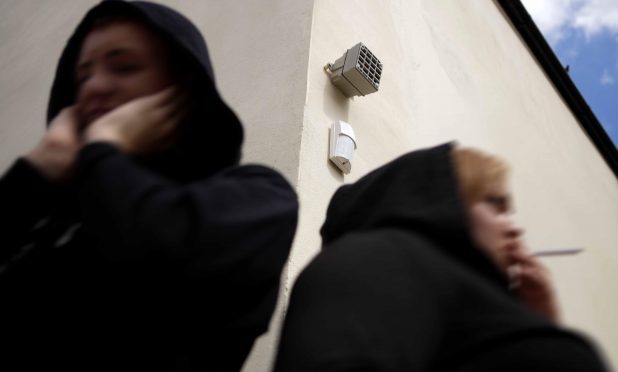It’s a machine which emits an ear-piercing scream that is only audible to children and teenagers and is designed to send them running to the hills.
It might sound like the basis for a new episode of Black Mirror, but this is real life.
So-called mosquito alarms have been in existence for about a decade, and so far more than 3,000 have been sold across the UK.
The sonic devices are meant to disperse groups of loitering youngsters, but many argue they are discriminatory and a contravention of children’s rights.
Perth and Kinross Council recently agreed to remove all eight devices it has fitted to schools across the region.
This followed growing pressure from local members of the Youth Parliament who campaigned on social media and in the pages of The Courier.
It was a great example of young people fighting on an issue which would – quite literally – fall on the deaf ears of some older politicians.
However, there are thought to be plenty of other mosquitos across still in use across the area, outside of the council’s control.
The Youth Parliament has pledged to fight on for an outright ban.
The Mosquito, usually found attached to roofs and protected by a wire mesh, works at a frequency of 16.5khz which by the age of 25, most people have lost the ability to hear.
That’s because the hairs in the ears that resonate with lower frequencies die off as you get older.
The device is turned on and off manually or by remote control, but can also work on a timer.
It was invented by Welsh grocer Harry Stapleton who used it to get rid of teenagers hanging about outside his shop.
But in a twist of irony, teenagers have been able to use the sound to their advantage. The annoying beep was turned into a mobile phone ring tone, which meant teachers couldn’t hear it when it rang in class.
There have been examples of more humane ways of dispersing teenagers, including a Co-op in Cove, near Aberdeen, which played classical music to ward off gangs.
This backfired when the youngsters started to grow an appreciation of the likes of Bach and Beethoven.
And now apparently shopkeepers are looking at using murderous, robotic guard dogs to watch over their premises and fight off any unwanted visitors. Oh, wait – that was actually an episode of Black Mirror. Back to the drawing board.










